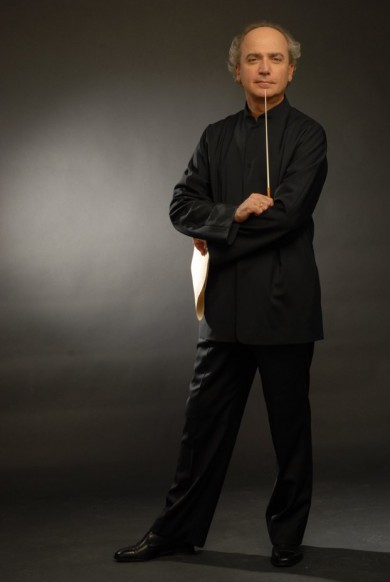Love hurts at mixed Miami Symphony concert
The Miami Symphony Orchestra, led by Eduardo Marturet, presented a program titled “Love and Betrayal” Sunday evening at the Adrienne Arsht Center’s Knight Concert Hall.
The program opened with the “Prelude and Liebestod” from Tristan und Isolde. The “unquenchable longing, desire forever renewing itself, craving and languishing…”—no better words than Wagner’s own can describe this celebrated music. The mystical “Tristan” chord that begins in the cellos blossoms into ascending lines, reaching deeper into the emotional dissonance of the soul. The Prelude connects to Isolde’s climactic “Liebestod” where sprawling, heart-wrenching melodies take flight as they transition between the instruments.
While the initial cello phrase started off strong with intense vibrato and warm tone, the rest of the orchestra playing left much to be desired. Although the conductor was clearly passionate in his delivery of the music, he was less consistent marking entrances and phrase endings, losing clarity and pacing in the thematic dialogue and climactic resolve.
The first half concluded with the world premiere of Love and Betrayal, a duo concerto on themes from Bizet’s Carmen for two double basses. In the words of composer Mauricio J. Rodriguez, a double bassist himself, Love and Betrayal is “a piece where contemporaneity, eclecticism, and academicism converge in a single point, toward a Romantic style but not limited by any stylistic preconception.”
The description seems quite a wide shoe to fill, and at times it felt like the composer had tried to intertwine one too many influences in this 20-minute work. Splashes of Venezuelan merengue and bluesy walking basses were overlaid with the original Habanera rhythm in the first movement, “L’amour est un oiseau rebelle.” In “Parle-moi de am mère!” the two soloists took on the roles of Don José and Micaela as an intense dialogue unfolded. In “Passion et la mort” the final movement’s opening measures struck with resonant and bombastic sonorities.
Rodriguez had retained many of the virtuosic vocal elements of Bizet’s original score for Carmen. Yet most of the passages leading either to the higher or lower registers of the solo instruments were drowned by the thick orchestration, with only a few moments of clarity in the cadenzas. Perhaps the balance would have benefitted from some amplification of the soloists.
Guest soloist Chi-Chi Nwanoku showed a natural inclination for the character of the music. Luis Gomez-Imbert, the initiator of this commission as well as the principal double bassist of the MISO, had suggested to adjust the tuning to give more brightness and projection to the sound. Perhaps due to this, tuning was one of the main problems in tonight’s performance, alongside fragmented phrasing, scarce vibrato by Gomez-Imbert, and unclear syncopations and articulation of rhythms.
The evening ended with Prokofiev’s iconic music for the ballet Romeo and Juliet, with movements selected by Marturet. While a conductor does not necessarily need to micromanage his or her orchestra, particularly during a performance, the Miami Symphony music director fluctuated between extremes. At times, he was overtly gestural, to the point of acting out the musical content, and other times he took a step back, completely stopped conducting and ‘enjoyed’ the music, almost as a member of the audience.
Yet the orchestra’s musicians managed to deliver the most successful execution of the evening, even if not managing to always strike the balance between excitement and precision. The violins often sounded shrill in the high register, the principal French horn was inconsistent in the melodic projection, and the percussion section was often much louder than necessary.
On the other hand, the neo-Classical touch of Prokofiev was brought to live with the arabesque-like elegance of the flutes. Guest principal cello Luke Krafka led the section with intent and grace, and the martial “Dance of the Knights” highlighted the rich and menacing sound quality of the brass players.
Posted in Performances
Leave a Comment
Mon Mar 20, 2017
at 2:00 pm
No Comments







